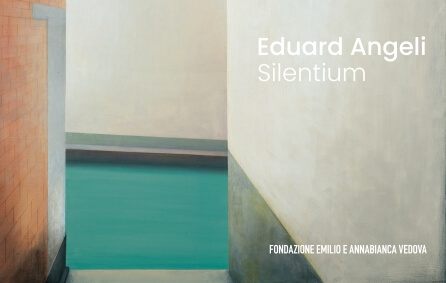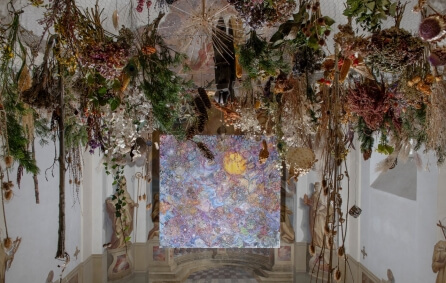MARIA LASSNIG 2019
Vom (Über)mut des Malens
“… it is difficult to visually define a body sensation; where does it begin, where does it end, what shape does it have, angular, round, jagged––and studying it is like enclosing clouds, like pinning down mists––a mysticism of the physical. (Maria Lassnig, 1982)
Today, Maria Lassnig is undoubtedly one of the internationally most acclaimed artists of her generation. Even during her lifetime, her work has been honoured in numerous exhibitions. First amongst these are her participation at the Venice Biennale together with Valie Export in 1980, her retrospective at the Museum moderner Kunst, Vienna in 1985, or the exhibition at the Stedelijk Museum in Amsterdam in 1994; however, it was not until 2000 that she gained greater recognition on an international level, due to numerous international exhibitions such as her magnificent show at MoMA PS1 in New York or presentations in Zurich, London, Cologne, Munich, Hamburg, Barcelona, Liverpool, Florence, Basel, Prague and Amsterdam. Meanwhile, hardly any other female painter is as well represented in the major museums worldwide as she is.
The appreciation of her complex oeuvre came late; some of it almost too late, such as the Golden Lion at the Venice Biennale in 2013, which she was unable to receive in person. There are many reasons for this late tribute to an exceptional artist: Lassnig was born in 1919, just after the First World War, and completed her studies during the Second World War. At the time of her early years as an artist, Austria was widely isolated from any other artistic development. Even more than the younger artists born around 1930, and as a woman in a male-dominated industry at that, she had to separate herself from all avant-garde movements, in order to develop her own artistic path––mostly without an existing art scene. Even during these early years, she strived for artistic independence and decided first to move to Paris and then, in 1968, to New York.
As early as 1947, she created the first body awareness drawings. Maria Lassnig considered painting as an inward-looking process; one has to reduce the senses and search for the emptiness inside oneself, and go from there. As a result, she spoke of "introspective experiences" and "introspective figurations" or "static meditations“, until the term "body awareness" emerged in the USA in 1968. This body awareness may appear in quite different attires, sometimes seemingly abstract, sometimes as a realistic painting, at times as a monster, at others as a cyborg. In any case, she succeeded in translating sensations into an entirely new, unprecedented formal language.
However, describing her entire work with the generic term "body awareness", would do injustice to its range. There is a risk that the diversity of this oeuvre, which spans more than eight decades, would be underestimated. Standstill or resting on already achieved matters were not her thing. Her "oeuvre, though more or less revolving around a single theme," is "extremely complex, often surprising and variable in its stylistic forms."[1] Hence, Maria Lassnig "performs an artistic revolution in her quiet and decisive manner"[2] and "is capable of reinventing herself and remaining innovative, unlike any other artist of her generation"[3].
The extensive sales exhibition at the Kovacek & Zetter gallery, which is unparalleled in the art trade, was preceded by a five-year preparation period. Many works were deliberately withheld for the occasion. Now, in a representative exhibition, several oil paintings and around thirty watercolors, drawings and prints from different phases will be on display and up for sale. The exhibition date was deliberately set in parallel to the large museum exhibition at the Albertina Museum (Vienna, 6th September–1st December 2019) and honours Maria Lassnig on the occasion of her 100th birthday, which she would have celebrated this year. The exhibition will be accompanied by a comprehensive catalogue with numerous contributions in German and English, elaborated in close collaboration with the Maria Lassnig Foundation.
[1] Wolfgang Drechsler (ed.), Maria Lassnig. exhibition catalogue, Museum moderner Kunst/Museum des 20. Jahrhunderts, Vienna; Kunstmuseum Düsseldorf, Düsseldorf; Kunsthalle Nürnberg, Nürnberg; Kärntner Landesgalerie, Klagenfurt 1985, p. 11
[2] Armin Wildermuth in: Drechsler (ed.), p. 112
[3] Natalie Lettner, Maria Lassnig. Die Biografie, Vienna 2017, p. 268







